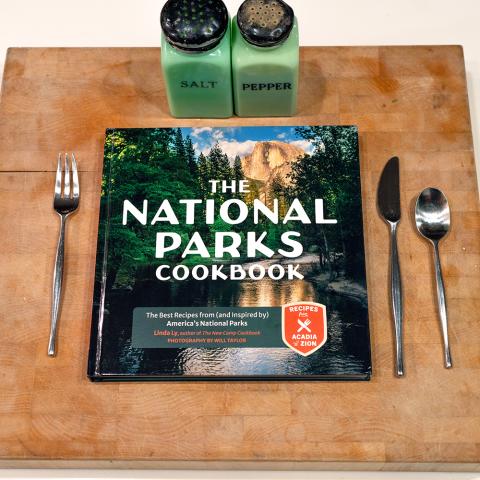Editor's note: Yellowstone Caldera Chronicles is a weekly column written by scientists and collaborators of the Yellowstone Volcano Observatory. This week's contribution is from Stanley Mordensky, geologist with the U.S. Geological Survey.
Yellowstone contains about 120 thermal areas that collectively are home to more than 10,000 thermal features, like hot springs and geysers. The exact number and location of these thermal areas is always changing, begging the question—where will future thermal areas develop?
Change is the most reliable constant in a hydrothermally evolving landscape like that of Yellowstone, so understanding where future thermal areas may develop is important information for managing park resources and focusing scientific observation. The immense scale and remote nature of the Greater Yellowstone Ecosystem, however, can make knowing where to look for developing thermal areas an exhausting process. For example, the relatively young Tern Lake thermal area started producing changes in vegetation observable by means of satellite data around 2000, but these changes were only noticed in 2018.
Geologists at the U.S. Geological Survey (USGS) are asking a similar question with respect to the United States, but rather than thinking about where to look for future hydrothermal areas, they are developing the tools to locate undiscovered hydrothermal systems. Nonetheless, the potential solutions to the two problems are similar by approach.

Aerial view of the new thermal area, in the center left. The existing Tern Lake thermal area is the bright white patch of ground in the upper middle part of the image. West Tern Lake is in the lower right. Research conducted under NPS Geology Programs Milestones Permit 2016-9.
In 2008, a USGS assessment of hydrothermal resources estimated that the western United States contains tens of thousands of megawatts of potential electrical power production from undiscovered hydrothermal resources. These USGS geologists are now estimating which regions of the western US have what proportions of these hydrothermal resources, with current work focused on the Great Basin, which is centered in Nevada with smaller sections Utah, Idaho, Oregon, California, and Wyoming. To find these yet-undiscovered geothermal resources, USGS geologists are using machine learning (a form of artificial intelligence) to build mathematical functions that correlate the presence of hydrothermal systems with faults, seismicity, stress in the crust, geophysics (like gravity and magnetic anomalies), and other data.
There are many machine learning approaches that can be used to correlate geologic datasets with the presence of hydrothermal systems, but USGS geologists have found that using approaches based on “decision trees,” akin to flowcharts with decisions dependent upon geologic conditions in the datasets, perform better than other forms of machine learning. More complex machine learning approaches generally need thousands of training sites for learning compared to decision trees. This is an important consideration because the number of known hydrothermal systems is relatively few. Simpler machine learning approaches do not account for the fact that not all hydrothermal systems are alike, so there is no one set of geologic conditions that will indicate the presence of a hydrothermal system. The decision tree approach, however, can identify “Goldilocks” conditions, which are qualities in the geologic datasets that are not too much, not too little, but just right to foster a hydrothermal system.

Map of areas predicted as having conditions favorable for fostering a hydrothermal system in the western United States. Black dots are mapped hydrothermal systems. From Mordensky et al., 2023
While it is prohibited to develop geothermal power in Yellowstone National Park, where the hydrothermal systems are protected, the machine learning tools being developed by the USGS geothermal team could be used to identify areas of the park where hydrothermal systems may develop in the future and, in a practical sense, inform scientists about where to look now.
Applying these machine learning approaches to identify thermal features on the Yellowstone volcanic plateau may also yield unexpected but interesting results extending beyond where to anticipate future thermal areas at Yellowstone. For example, the USGS team experimenting with machine learning and geothermal datasets have already established strong relations between heat flow and the likelihood of an area hosting a hydrothermal system. A similarly strong relation has been observed between hydrothermal systems and the proximity to geologic structures that promote underground fluid flow, like faults. But when heat flow is pretty much high everywhere, as it is across the Yellowstone plateau, how do the conditions needed to host a hydrothermal system change? What other geologic conditions play determining roles? Future research may help to address these questions.
In addition to providing a potential tool to forecast where new hydrothermal areas may develop in Yellowstone in the future, these machine learning approaches might also provide information about the geologic conditions that drive hydrothermal circulation in general. This could be applied to other large areas with high heat flow, like the Taupō caldera system in New Zealand. Therefore, studying the geothermal activity at Yellowstone National Park might help scientists understand better methods for developing geothermal energy elsewhere.




 Support Essential Coverage of Essential Places
Support Essential Coverage of Essential Places






